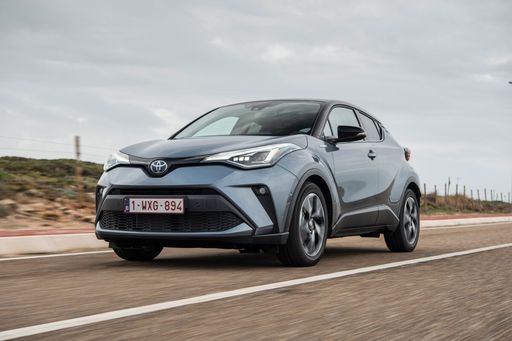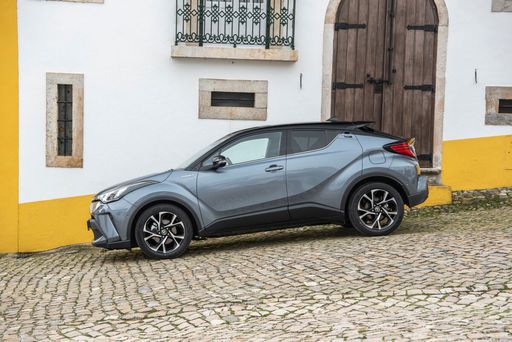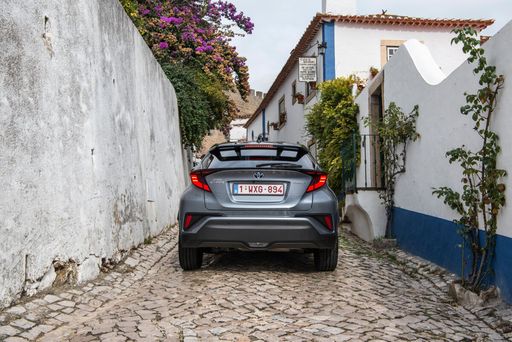Mercedes Marco Polo vs Toyota C-HR – Which model is better for everyday use?
Everyday use, family trips or long-distance drives – here’s where the differences show.
Discover whether Mercedes Marco Polo or Toyota C-HR fits your lifestyle better.
Costs and Efficiency:
Looking at overall running costs, both models reveal some interesting differences in everyday economy.
Toyota C-HR has a convincingly advantage in terms of price – it starts at 29100 £, while the Mercedes Marco Polo costs 57500 £. That’s a price difference of around 28351 £.
Fuel consumption also shows a difference: Toyota C-HR manages with 0.80 L and is therefore convincingly more efficient than the Mercedes Marco Polo with 7.40 L. The difference is about 6.60 L per 100 km.
Engine and Performance:
Power, torque and acceleration say a lot about how a car feels on the road. This is where you see which model delivers more driving dynamics.
When it comes to engine power, the Mercedes Marco Polo has a barely noticeable edge – offering 237 HP compared to 223 HP. That’s roughly 14 HP more horsepower.
Both models accelerate almost equally fast – 7.40 s from 0 to 100 km/h.
In terms of top speed, the Mercedes Marco Polo performs somewhat better – reaching 220 km/h, while the Toyota C-HR tops out at 180 km/h. The difference is around 40 km/h.
Space and Everyday Use:
Whether family car or daily driver – which one offers more room, flexibility and comfort?
Seats: Toyota C-HR offers to a small extent more seating capacity – 5 vs 4.
In curb weight, Toyota C-HR is clearly lighter – 1505 kg compared to 2450 kg. The difference is around 945 kg.
In terms of boot space, the Mercedes Marco Polo offers clearly perceptible more room – 670 L compared to 447 L. That’s a difference of about 223 L.
In maximum load capacity, the Mercedes Marco Polo performs clearly better – up to 4630 L, which is about 3475 L more than the Toyota C-HR.
When it comes to payload, Mercedes Marco Polo distinct takes the win – 650 kg compared to 425 kg. That’s a difference of about 225 kg.
Who wins the race?
The Toyota C-HR proves to be outperforms in nearly all aspects and therefore becomes our DriveDuel Champion!
Toyota C-HR is the better all-rounder in this comparison.

Toyota C-HR
Mercedes Marco Polo
The Mercedes-Benz Marco Polo offers a luxurious and versatile travel experience, combining high-end design with practical functionality. Its spacious interior is thoughtfully designed, providing ample comfort for long journeys, while innovative features enhance the overall driving experience. This vehicle seamlessly integrates style with adventure, making it an ideal choice for those looking to explore the open road in comfort and sophistication.
detailsToyota C-HR
The Toyota C-HR stands out with its distinctive and bold design that combines sleek, angular lines with a sporty posture. Its comfortable and stylish interior is equipped with advanced technology features, providing a seamless driving experience. The vehicle offers impressive handling and performance, making it a compelling choice for those who appreciate a blend of practicality and flair on the road.
details @ Toyota
@ Toyota
 @ Toyota
@ Toyota
 @ Toyota
@ Toyota
 @ Toyota
@ Toyota
 @ Toyota
@ Toyota

|
|
|
|
|
Costs and Consumption |
|
|---|---|
|
Price
57500 - 82600 £
|
Price
29100 - 42800 £
|
|
Consumption L/100km
7.4 - 8.3 L
|
Consumption L/100km
0.8 - 5.1 L
|
|
Consumption kWh/100km
-
|
Consumption kWh/100km
-
|
|
Electric Range
-
|
Electric Range
68 km
|
|
Battery Capacity
-
|
Battery Capacity
-
|
|
co2
194 - 218 g/km
|
co2
17 - 115 g/km
|
|
Fuel tank capacity
70 L
|
Fuel tank capacity
43 L
|
Dimensions and Body |
|
|---|---|
|
Body Type
Bus
|
Body Type
SUV
|
|
Seats
4
|
Seats
5
|
|
Doors
4 - 5
|
Doors
5
|
|
Curb weight
2450 - 2545 kg
|
Curb weight
1505 - 1755 kg
|
|
Trunk capacity
670 L
|
Trunk capacity
350 - 447 L
|
|
Length
5140 mm
|
Length
4362 mm
|
|
Width
1928 mm
|
Width
1832 mm
|
|
Height
1975 mm
|
Height
1558 - 1564 mm
|
|
Max trunk capacity
4630 L
|
Max trunk capacity
1076 - 1155 L
|
|
Payload
555 - 650 kg
|
Payload
375 - 425 kg
|
Engine and Performance |
|
|---|---|
|
Engine Type
Diesel
|
Engine Type
Full Hybrid, Plugin Hybrid
|
|
Transmission
Automatic
|
Transmission
Automatic
|
|
Transmission Detail
Automatic Gearbox
|
Transmission Detail
CVT
|
|
Drive Type
Rear-Wheel Drive, All-Wheel Drive
|
Drive Type
Front-Wheel Drive, All-Wheel Drive
|
|
Power HP
163 - 237 HP
|
Power HP
140 - 223 HP
|
|
Acceleration 0-100km/h
7.4 - 10.7 s
|
Acceleration 0-100km/h
7.4 - 9.9 s
|
|
Max Speed
188 - 220 km/h
|
Max Speed
175 - 180 km/h
|
|
Torque
380 - 500 Nm
|
Torque
-
|
|
Number of Cylinders
4
|
Number of Cylinders
4
|
|
Power kW
120 - 174 kW
|
Power kW
103 - 164 kW
|
|
Engine capacity
1950 cm3
|
Engine capacity
1798 - 1987 cm3
|
General |
|
|---|---|
|
Model Year
2024 - 2025
|
Model Year
2024 - 2025
|
|
CO2 Efficiency Class
G
|
CO2 Efficiency Class
C, B
|
|
Brand
Mercedes-Benz
|
Brand
Toyota
|
What drivetrain options does the Mercedes Marco Polo have?
The Mercedes Marco Polo is offered with Rear-Wheel Drive or All-Wheel Drive.
The prices and data displayed are estimates based on German list prices and may vary by country. This information is not legally binding.
